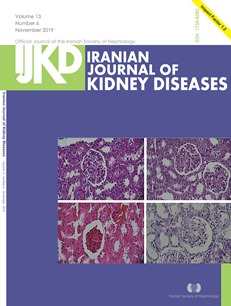Duration of Vascular Access Usage and Patient Survival in the First Year of Hemodialysis
Abstract
Introduction. The central venous catheter (CVC) has been shown to increase mortality in hemodialysis (HD) patients compared with the arteriovenous fistula (AVF). However, no study has examined the mortality of HD patients based on the time of conversion from the CVC to AVF. In this study, we investigated the association between patients’ survival and length of time of using each access.
Methods. The C5.0 algorithm was used to find rules about the relationship between duration of the different access usage and survival. The cox model was applied to assess the association of the obtained duration categories and mortality.
Results. From 2367 adult patients who received maintenance HD from 2012 to 2014, 705 patients were eligible for the study. Using an AVF for more than 8 months and a CVC for less than 4.2 months had the highest one-year survival rate (91.8% and 87.4%). The hazard ratio (HR) for mortality of less than 2.8 months of AVF usage compared to the longest usage was 6.90 (95% CI: 4.60 - 10.30) before adjustment and 5.03 (95% CI: 3.20 - 8.00) after adjustment for all confounders. For the CVC, the ratio was 8.8 (95% CI: 6.00 - 13.00) when comparing more than 9.2 months of usage with the lowest usage duration before an adjustment and 6.00 (95% CI: 3.80 - 9.41) after adjustment.
Conclusion. Our results presented that regardless of the type of initial vascular access, limiting the length of the time using CVC as well as switching to AVF could significantly improve the survival of HD patients.


